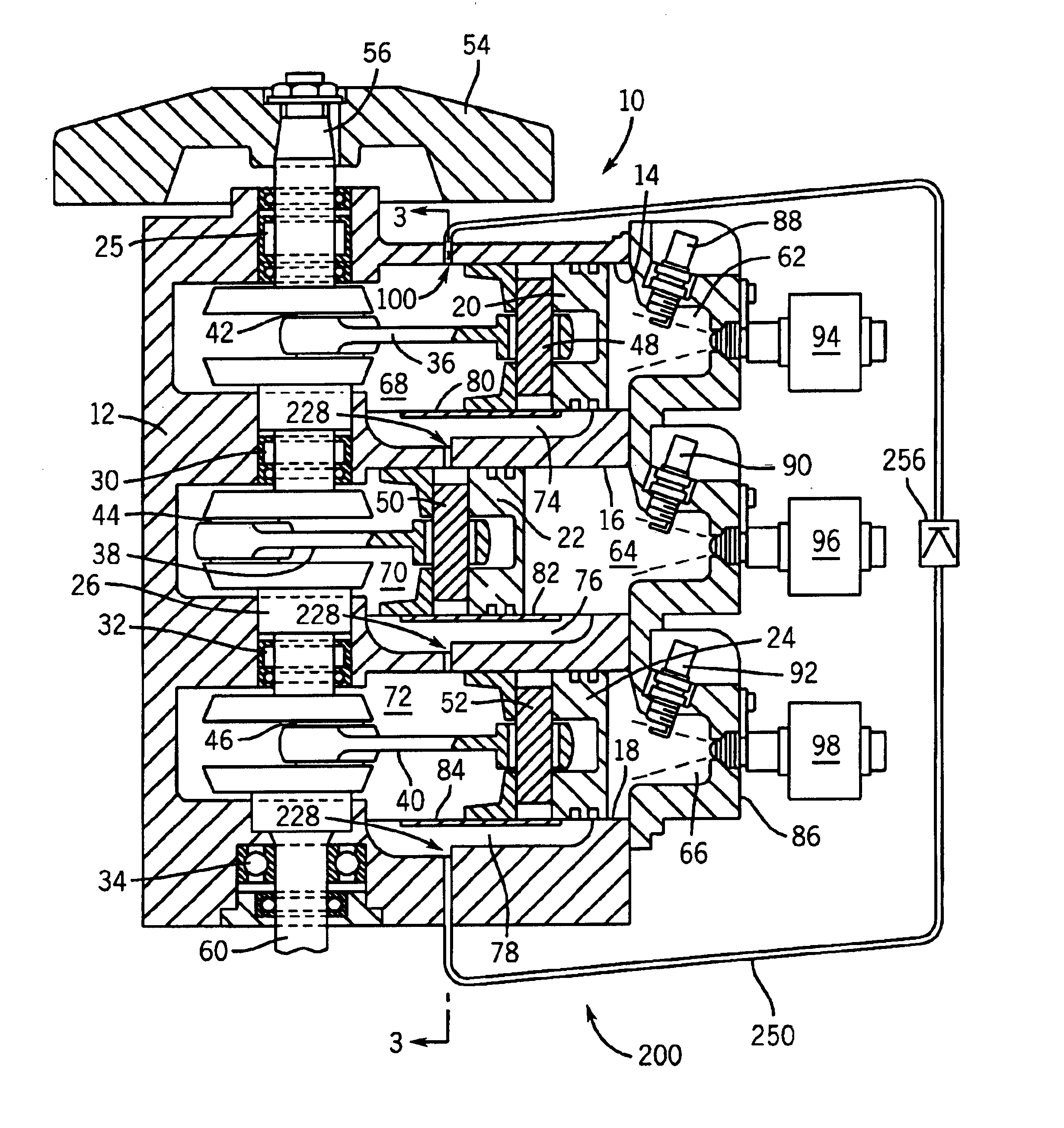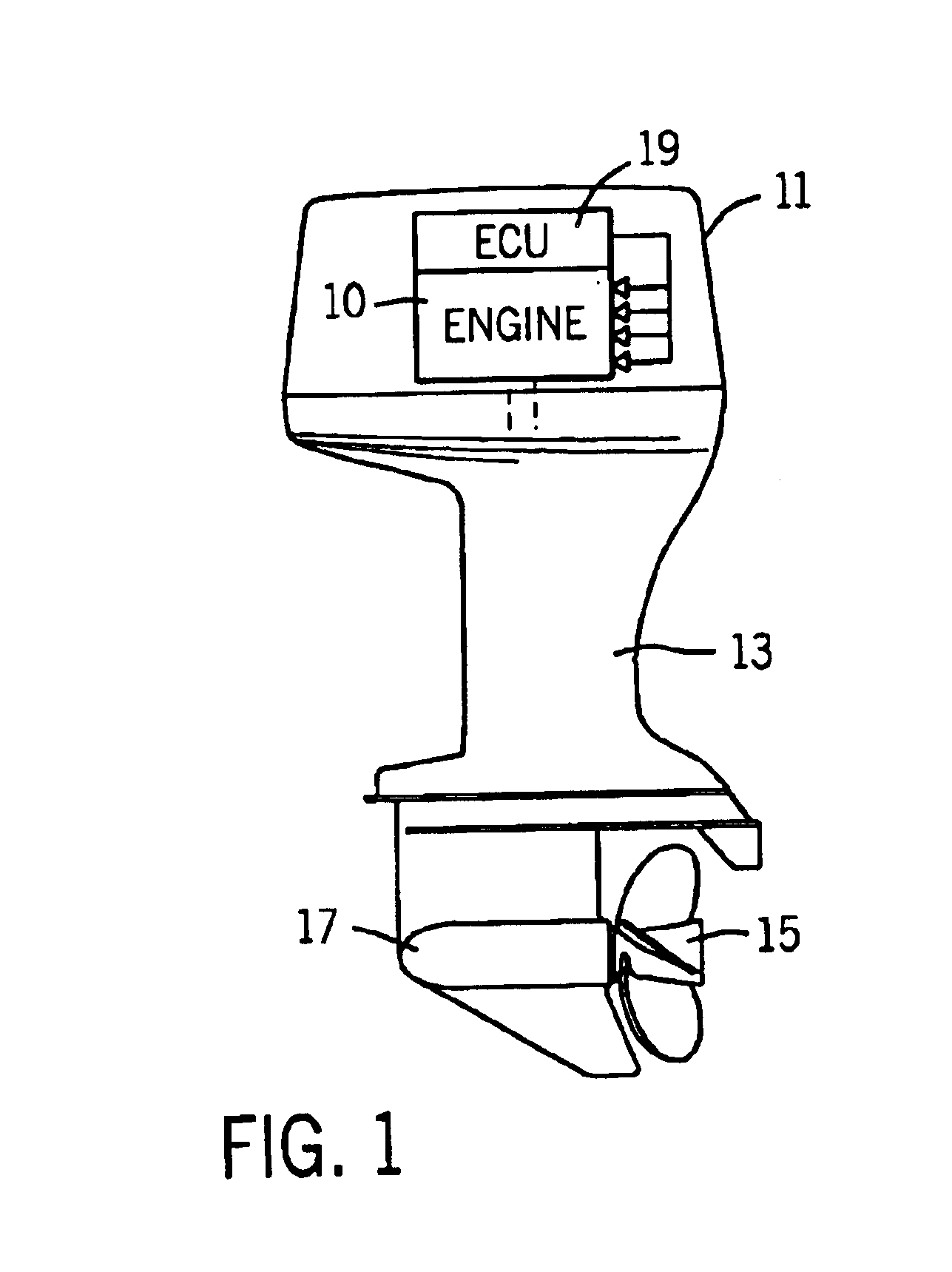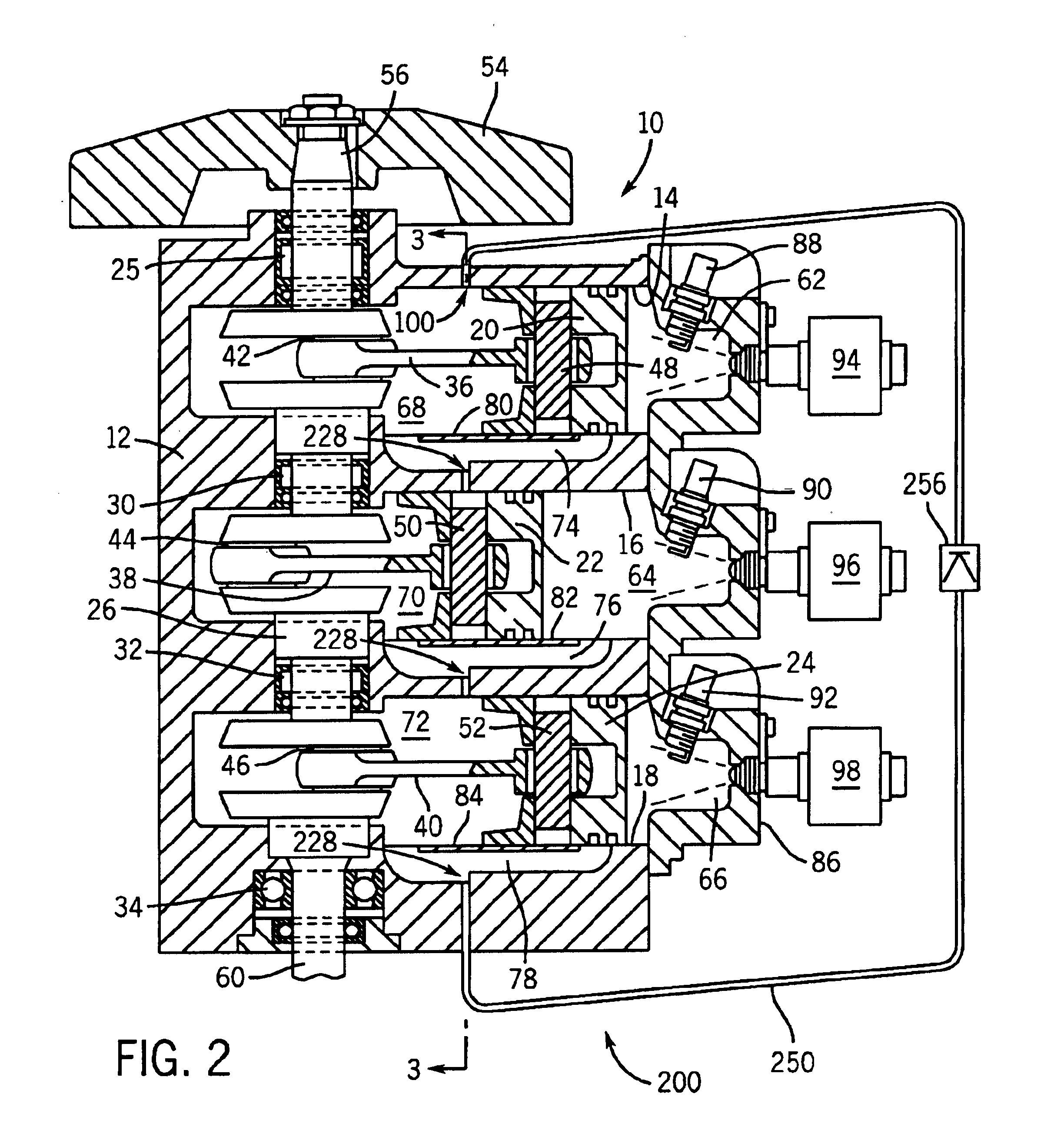Method and apparatus for inter-cylinder lubrication transfer in a multi-cylinder internal combustion engine
a multi-cylinder, internal combustion engine technology, applied in the direction of auxilary lubrication, lubrication elements, pressure lubrication, etc., can solve the problems of increased pollutants exhausted from the engine, excess lubricant drawn, and consumption of crankcase fluid, so as to improve lubrication, reduce output pollutants, and facilitate oil movement
- Summary
- Abstract
- Description
- Claims
- Application Information
AI Technical Summary
Benefits of technology
Problems solved by technology
Method used
Image
Examples
Embodiment Construction
The present invention is applicable to two-stroke engines that can be arranged in which gravitational forces can have detrimental effects on emission levels and lubrication. Applications for such engines can include outboard marine engines, personal watercraft engines, snowmobiles, lawn and garden equipment, etc. One such engine 10, illustrated in FIG. 1, comprises an outboard two-stroke internal combustion engine. The engine is housed in a powerhead 11 and supported on a mid-section 13 configured for mounting on the transom of a boat (not shown) in a known conventional manner. An output shaft (not shown) of the engine 10 is coupled to drive a propeller 15 extending rearwardly of a lower gearcase 17 via the mid-section 13. The engine 10 is controlled by an electronic control unit (ECU) 19. While the present invention is shown in FIG. 1 as being incorporated into an outboard motor, the present invention is also applicable with many other applications, including inboard or stern drive...
PUM
 Login to View More
Login to View More Abstract
Description
Claims
Application Information
 Login to View More
Login to View More - R&D
- Intellectual Property
- Life Sciences
- Materials
- Tech Scout
- Unparalleled Data Quality
- Higher Quality Content
- 60% Fewer Hallucinations
Browse by: Latest US Patents, China's latest patents, Technical Efficacy Thesaurus, Application Domain, Technology Topic, Popular Technical Reports.
© 2025 PatSnap. All rights reserved.Legal|Privacy policy|Modern Slavery Act Transparency Statement|Sitemap|About US| Contact US: help@patsnap.com



